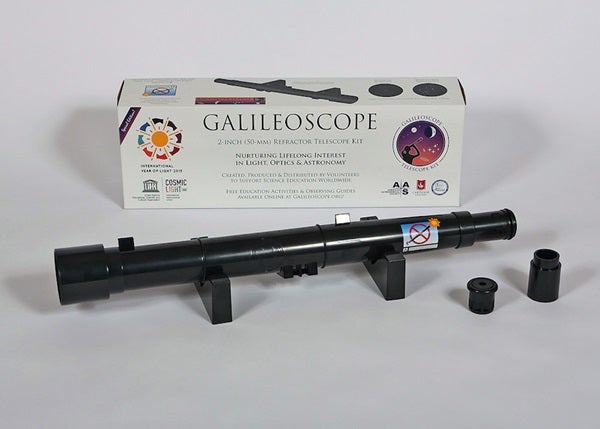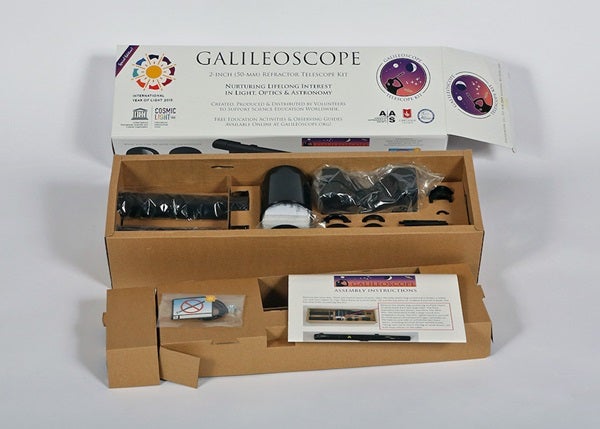KENOSHA, Wis. –
Feb. 20, 2018 – After nearly a decade, the
Galileoscope project will be drawing to a close unless a project sponsor, science-products company, or other organization steps forward to continue it. Created as a worldwide cornerstone project for the
2009 International Year of Astronomy (IYA), the Galileoscope solved a long-standing problem: the lack of a high-quality, low-cost telescope kit suitable for both optics education and celestial observation. The Galileoscope was also a cornerstone project of the 2015 International Year of Light (IYL). Over the course of the project, managed by volunteers and promoted mainly through word-of-mouth, more than a quarter million Galileoscope kits have been distributed to teachers, students, and other enthusiasts in more than 110 countries for science education and public outreach.
In the process of assembling the Galileoscope, users explore fundamental optical concepts such as how lenses form images. Then, with their completed 50-mm (2-inch) diameter, 25- to 50-power refracting (lens-based) telescope — which attaches to any standard photo tripod — they enjoy sharp views of lunar craters and mountains, Jupiter’s moons, Saturn’s rings, the phases of Venus, and other bright celestial objects that the pioneering Italian astronomer Galileo first observed four centuries ago. The kit is augmented with free, standards-based optics-education and observing activities, available in multiple languages. These well-tested activities can be used by classroom and after-school teachers and informal educators to provide an engaging approach to teaching science and the process of science. Galileoscopes have also been incorporated into veteran rehabilitation programs such as Wounded Warriors and Home Base, as well as science camps and nature outreach and education programs.
The Galileoscope has been featured in professional-
development workshops for educators worldwide. Among the organizations routinely incorporating the kit into their teacher training are the U.S. National Optical Astronomy Observatory (NOAO), the Astronomical Society of the Pacific (ASP), and the Galileo Teacher Training Program (GTTP). NOAO has established a program of workshops for educators that can be carried out virtually anywhere — including online ― at minimal cost to the host institution.
Since its inception, the Galileoscope project has facilitated gifts to teachers and students who might otherwise not have access to a telescope. During the 2009 IYA, some 7,000 kits were donated to educators throughout Africa and the Middle East through a buy-one-give-
one program augmented by support from UNESCO and the International Astronomical Union (IAU). That same year, Jean and Ric Edelman, founders of Edelman Financial Services (EFS), donated 15,000 Galileoscopes to U.S. science teachers. During the 2015 IYL, the Edelmans made another generous contribution to support the distribution of 10,000 additional Galileoscopes to K-12 educators in the U.S. More recently, the Gordon and Betty Moore Foundation facilitated the distribution of 6,000 Galileoscope kits to teachers through a professional-development program managed by the ASP.
The end of the Galileoscope project is not a failure — in fact, the Galileoscope succeeded beyond its creators’ wildest dreams. The program was expected to last only through the IYA, but the global astronomy education/outreach community loved the kit and asked its creators to keep it in production, which they have managed to do for an additional eight years. The future of the Galileoscope is now in question – will someone step forward to continue its legacy?











